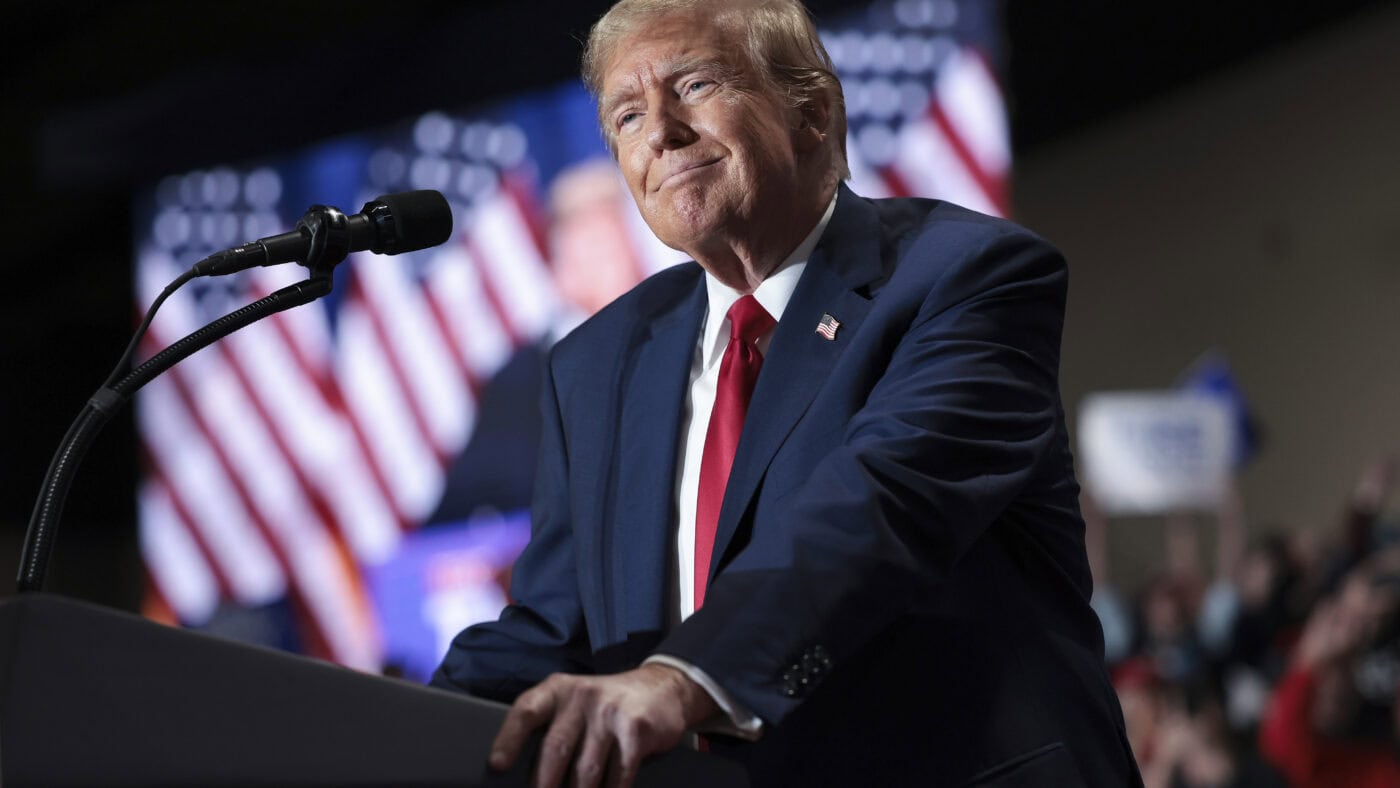During his first term as US president, Donald Trump adopted a forthright approach to the issue of Nato funding. It had been an issue that concerned previous presidents too, but Trump forced it into the open and demanded that member states pay their fair share on defence. An inconvenient truth is that his approach worked, with many European countries increasing or planning to raise defence spending.
With a second crack at the whip, could his tariff policy inadvertently trigger the corrective actions elsewhere that have been called for over the last 20 years, with surplus countries (states which sell more than they buy) boosting domestic demand?
Tariffs form a central plank of Trump’s economic policy. Their impact depends upon how high and extensive they are, and on how firms and other countries respond.
Ahead of the 2008 financial crisis, much attention was focused on correcting trade imbalances, then seen as the big threat.
In June 2006 the IMF hosted the first ever Multilateral Consultation on Global Imbalances. It involved five countries or regions who were ‘a direct party’ to those imbalances. These were China, the Euro area, Japan, Saudi Arabia and the US. The aim was an orderly unwinding of imbalances in a manner supportive of global growth.
Yet by autumn 2007, the IMF’s World Economic Outlook proclaimed, ‘risks related to persistent global imbalances remain a concern’.
Low long-term interest rates reflected the global savings-investment imbalance. Then-Chairman of the Federal Reserve Ben Bernanke talked of a ‘savings glut’.
Surplus countries were pressurised to boost private demand, and the US was encouraged to increase savings to reduce imbalances. Equally, within the Euro area, trade imbalances were a destabilising force, as internal deficits were no longer able to be addressed by currency devaluations.
For the bulk of the time since the 2008 crisis, countries in the West have relied upon loose monetary policies and rising public debt to help growth, with mixed success, particularly across Western Europe.
Globally, there has been a shift towards interventionist policies, increased subsides, regulatory barriers and tariffs. In many cases, concerns about national security or the climate crisis have driven this.
The higher and more extensive Trump’s tariff increases are, the greater the fallout. Tariffs force higher prices on the goods impacted and incentivise targeted firms or countries to react.
The hope is countries do not respond with beggar-my-neighbour policies, as trade wars dent trade and global growth. In Trump’s first term, China’s response to US tariffs was to seek self-sufficiency in food, energy and technology, as it shifted to its ‘dual-circulation’ policy. Now their policy options include boosting exports to other regions such as ASEAN, shifting production destined for the US to third countries or negotiating with the US and in return opening up more of their domestic market. They could ease policy to boost domestic demand, too.
The ability of China to use its financial leverage cannot be ignored. It has large holdings of US assets. It is delivering upon its mBridge project to explore a multi central bank digital currency platform. Meanwhile, it has just issued its first ever dollar denominated bond in Saudi Arabia, raising $2 billion in three and five year notes. The spread over US Treasuries was only one and three basis points, respectively, and the issuance heavily oversubscribed. While renminbi internationalisation remains an aim, the ability to raise dollars cheaply and to use such funds across the Belt and Road highlights China’s increasing financial might.
Germany, the other major casualty of tariffs, seems far more exposed. All the while, Trump’s decision this week to target Canada and Mexico – as well as China – demonstrates his willingness to use tariffs as a ‘catch-all’ for non-economic issues.
The large surplus countries are China, Germany and Japan, while the large deficit ones remain the US and the UK. Additionally, a number of smaller countries have large surpluses in relation to their economies, including Singapore, Ireland, Norway and Switzerland. Interestingly, Saudi Arabia is the only one of the five regions identified in 2006 to have made serious inroads, with a far smaller surplus now.
Trump’s policies confirm a 2007 IMF warning that ‘sustained large trade imbalances could prompt rising protectionist pressures’. As it noted, the ‘growth benefits of an open economy are not being adequately shared among different social groups’.
Solving imbalances requires both deficit and surplus countries to act. Ideally, the US needs higher savings, not tariffs. With global imbalances persisting – and Trump’s policy instincts – it is no surprise the US is moving from a carrot to a stick approach.
Click here to subscribe to our daily briefing – the best pieces from CapX and across the web.
CapX depends on the generosity of its readers. If you value what we do, please consider making a donation.


